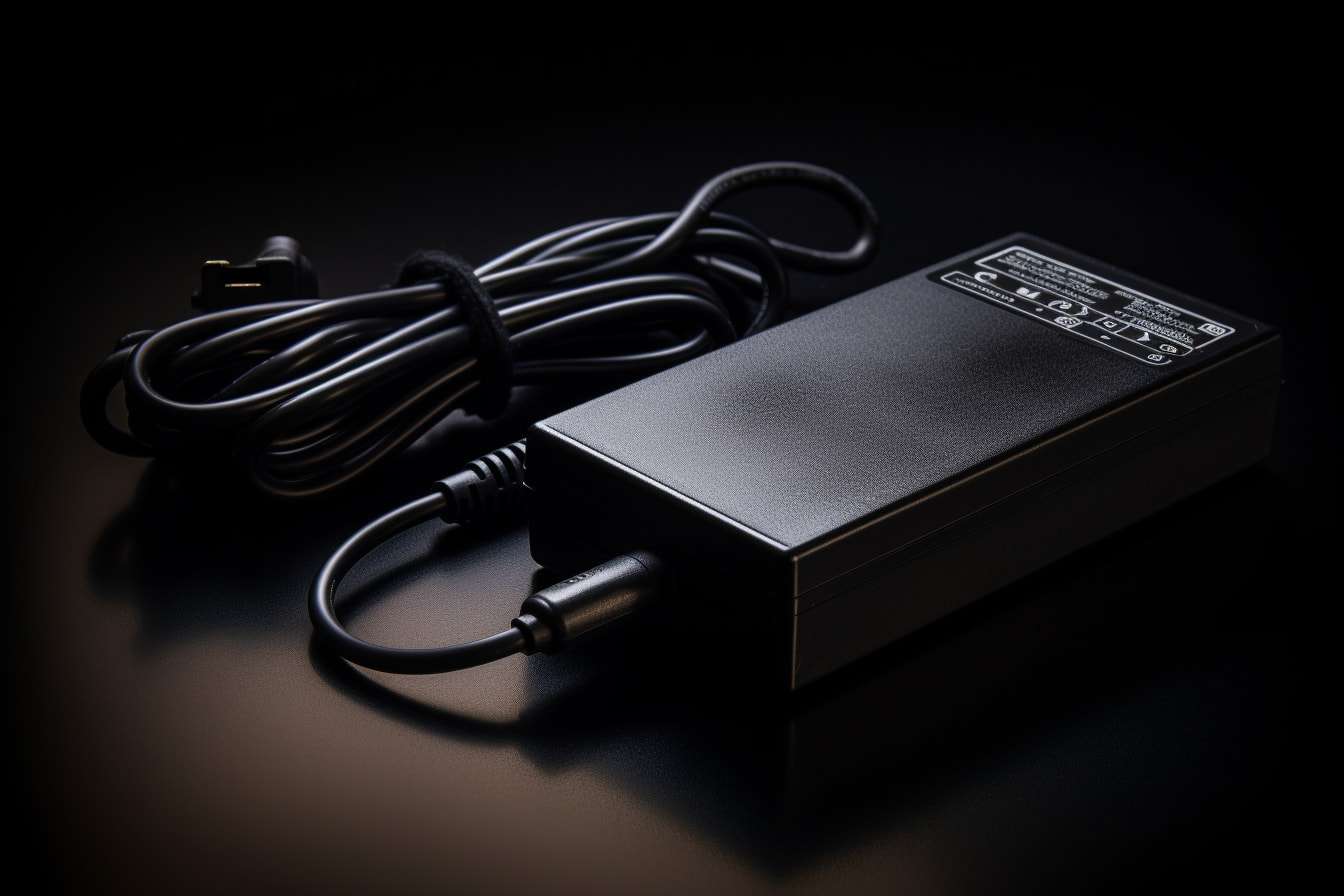Laptop chargers are essential components that power our laptops, but do they all have the same standard wattage of 65W? This question has been a topic of debate among laptop users and manufacturers, and it’s important to understand whether it’s true or not.
The wattages of laptop chargers can range from 35W to as high as 130W, and there is no set “standard” wattage since it is always dependent on the power needs of the laptop’s internal parts. 65W is, however, a very common wattage for laptop chargers, and often public plugs are capped at 65W.
Whether you have an extremely powerful gaming laptop or prefer a simple traveling notebook for work, it’s important to know your laptop’s wattage.
Market Trends
The laptop charger market has seen significant changes in recent years, with increasing demand for high-powered chargers to keep up with the power-hungry laptops and peripherals of modern computing. As a result, the traditional 65W standard has become less prevalent, and manufacturers are now offering chargers with higher wattages.
Analysis of Current Market Trends

The trend towards higher wattage laptop chargers can be attributed to a few factors. Firstly, laptops are becoming more powerful and feature-packed, requiring more power to run at optimal levels. Additionally, the rise of gaming laptops and high-performance workstations has led to a demand for even more powerful chargers, with wattages of 90W, 120W, or even higher.
Another factor driving the market trend is the increasing popularity of USB-C charging. Many newer laptops and peripherals now support USB-C charging, which offers higher wattage and faster charging speeds. This has led to a proliferation of USB-C chargers with various wattages and power delivery profiles.
Discussion of Market Demand for Charger Wattage
The demand for higher wattage laptop chargers is primarily driven by users who require more power for their laptops and peripherals. This includes gamers, content creators, and professionals who need to run demanding software or use power-hungry peripherals such as external graphics cards or storage devices.
However, not all users require high-powered chargers, and some may prefer smaller, lighter chargers for portability. This has led to a market segmentation between high-powered and low-powered laptop chargers, with some manufacturers offering both options to cater to different user needs.
You may also like: Can I Check A Laptop Charger In On International Flights?
Analysis of Laptop Charger Wattage by Brand and Model
Different laptop brands and models may have different power requirements, and as a result, charger wattages can vary widely. Some manufacturers may offer multiple charger options for a single laptop model, with different wattages and connector types.
For example, the popular Dell XPS 13 laptop has a default charger with a wattage of 45W, but Dell also offers a 65W charger and a 90W charger as options. Similarly, the MacBook Pro comes with a 61W charger by default, but users can opt for an 87W charger for faster charging speeds.
Here is a table showing the wattage needs of some of the most common laptops on the market:
Laptop Model | Recommended Wattage |
Dell XPS 15 | 130W |
MacBook Pro 13-inch | 61W or 87W |
HP Spectre x360 | 65W |
Lenovo ThinkPad X1 Carbon | 65W or 90W |
Microsoft Surface Laptop 4 | 65W or 102W |
Acer Swift 5 | 65W |
Asus Zenbook 14 | 65W |
LG Gram 14 | 65W |
Razer Blade Stealth 13 | 100W |
MSI GS66 Stealth | 230W |
Reasons for Non-Standard Wattage
In recent years, there has been a trend towards laptops with thinner designs, longer battery life, and more powerful hardware. This has led to the development of laptop chargers with non-standard wattage, such as 45W or 90W. We will explore the reasons why laptop chargers may have a wattage that is different from the standard 65W.
One reason for the use of non-standard wattage laptop chargers is to provide more power to laptops with higher hardware demands, such as gaming laptops or workstations. These laptops require more power to run their high-end graphics cards, processors, and other components. As a result, they may come with a larger, more powerful charger to provide the necessary power.
On the other hand, some laptop manufacturers may choose to use a lower wattage charger to reduce the size and weight of the charger, making it more portable and convenient for users who are frequently on the move. For example, a laptop that is designed for everyday use, such as browsing the web and checking email, may only require a 45W charger to provide sufficient power.
It is worth noting that not all laptop chargers with non-standard wattage are designed to provide more or less power than the standard 65W charger. Some manufacturers may simply use a different wattage to differentiate their product from others on the market, or to meet specific regional or regulatory requirements.
Some common examples of laptop chargers with non-standard wattage include:
- Dell XPS 13, which comes with a 45W charger
- MacBook Pro, which comes with an 87W or 96W charger, depending on the model
- Lenovo Yoga C940, which comes with a 65W or 90W charger, depending on the model
Risks and Precautions for Using Non-Standard Wattage Chargers
When using a non-standard wattage charger, there may be several risks and problems such as:
- Overheating and damage to laptop components
- Reduced battery life
- Incompatibility with the laptop
- Safety hazards such as fire or electric shock
To avoid potential risks and problems when using a non-standard wattage laptop charger, here are some precautions and suggestions:
- Check the charger’s compatibility with your laptop before using it
- Avoid using chargers with wattage significantly higher or lower than your laptop’s recommended wattage
- Use chargers from reputable manufacturers and avoid cheap knock-offs
- Keep an eye on your laptop’s temperature and performance when using a non-standard wattage charger
- Consider getting a replacement charger with the correct wattage if the current charger is causing issues
when it is appropriate to use a non-standard wattage laptop charger It may be appropriate to use a non-standard wattage laptop charger under certain circumstances such as:
- In emergency situations where a standard wattage charger is not available
- When a laptop’s battery requires a different wattage than the standard charger provides
- When a laptop’s components require more power than the standard charger can provide
However, it is important to keep in mind the potential risks and problems associated with using non-standard wattage laptop chargers and take necessary precautions to avoid them.
How to Choose the Right Laptop Charger
Discuss the importance of choosing the right charger for your laptop
- Check laptop manufacturer’s specifications for recommended charger wattage and voltage
- Consider laptop usage and power needs (e.g. gaming, travel)
- Choose a reputable brand and seller
- Buy from reputable retailers or the manufacturer’s website
- Check seller reviews and ratings
- Look for warranties and return policies
- Avoid buying the cheapest option
- Verify the charger’s compatibility with your laptop before purchasing
Conclusion
It is important to choose the right laptop charger to ensure optimal performance and prevent potential risks. Consumers should consider the brand, model, and wattage of their laptop to choose a compatible and reliable charger.
Additional practical advice includes checking the warranty and customer support of the charger manufacturer, avoiding counterfeit or low-quality chargers, and properly storing and maintaining the charger to prolong its lifespan. By following these recommendations, consumers can make informed decisions and use their laptop chargers safely and effectively.
You may also like: Why Is My Laptop Charger Sparks When Plugged in?

